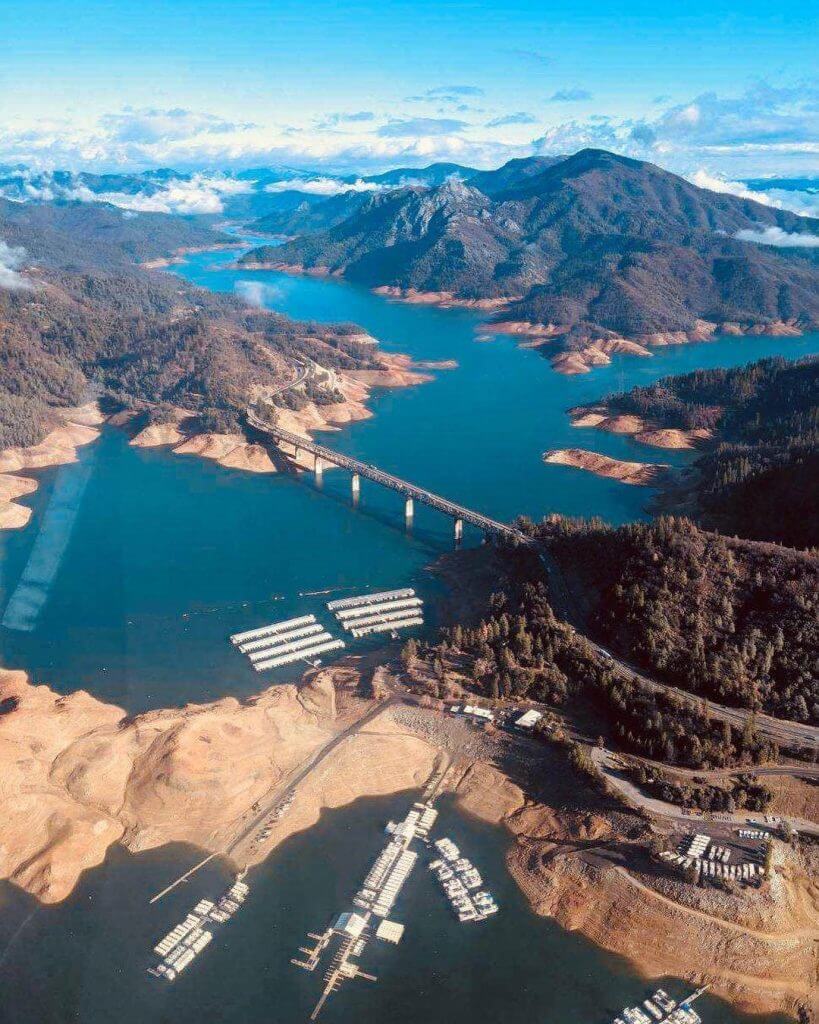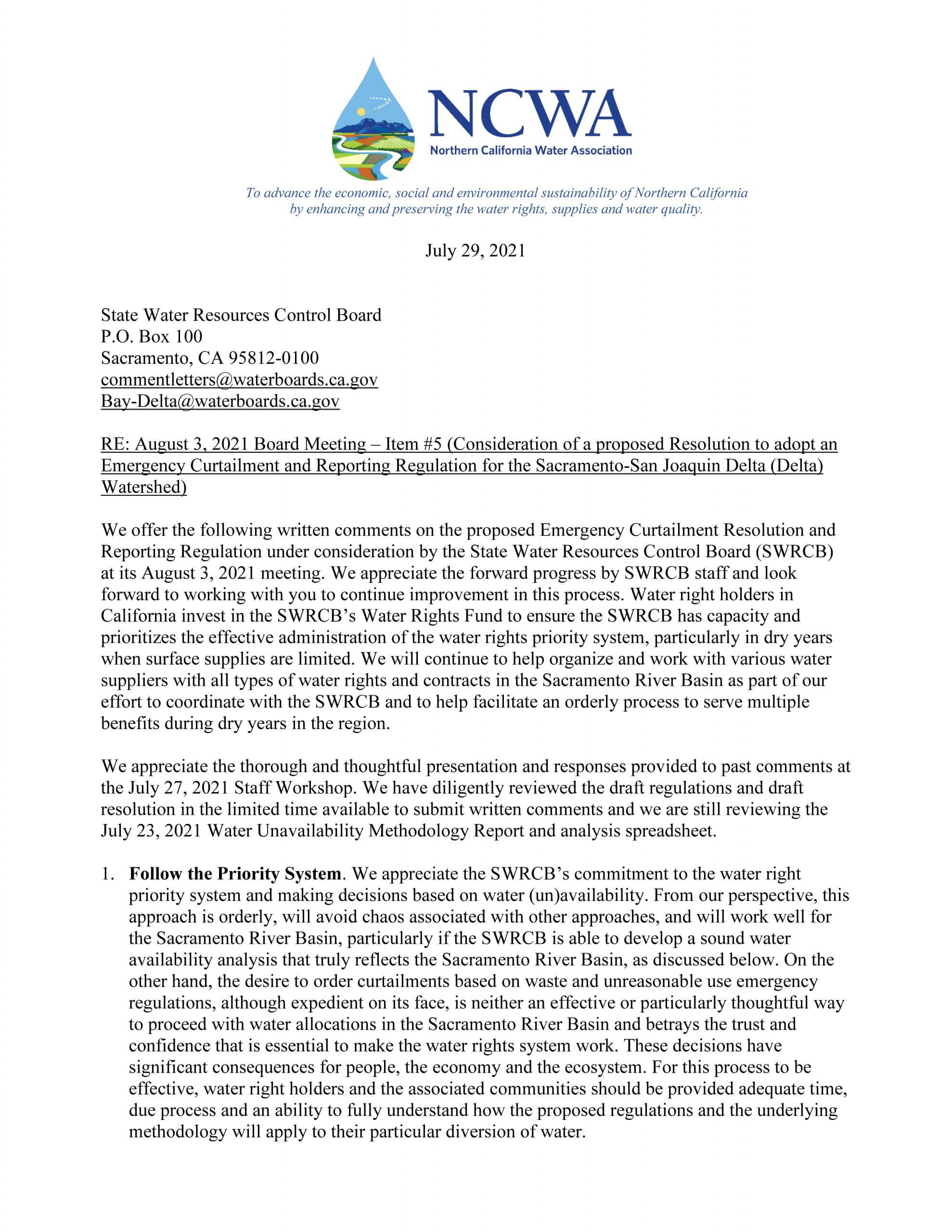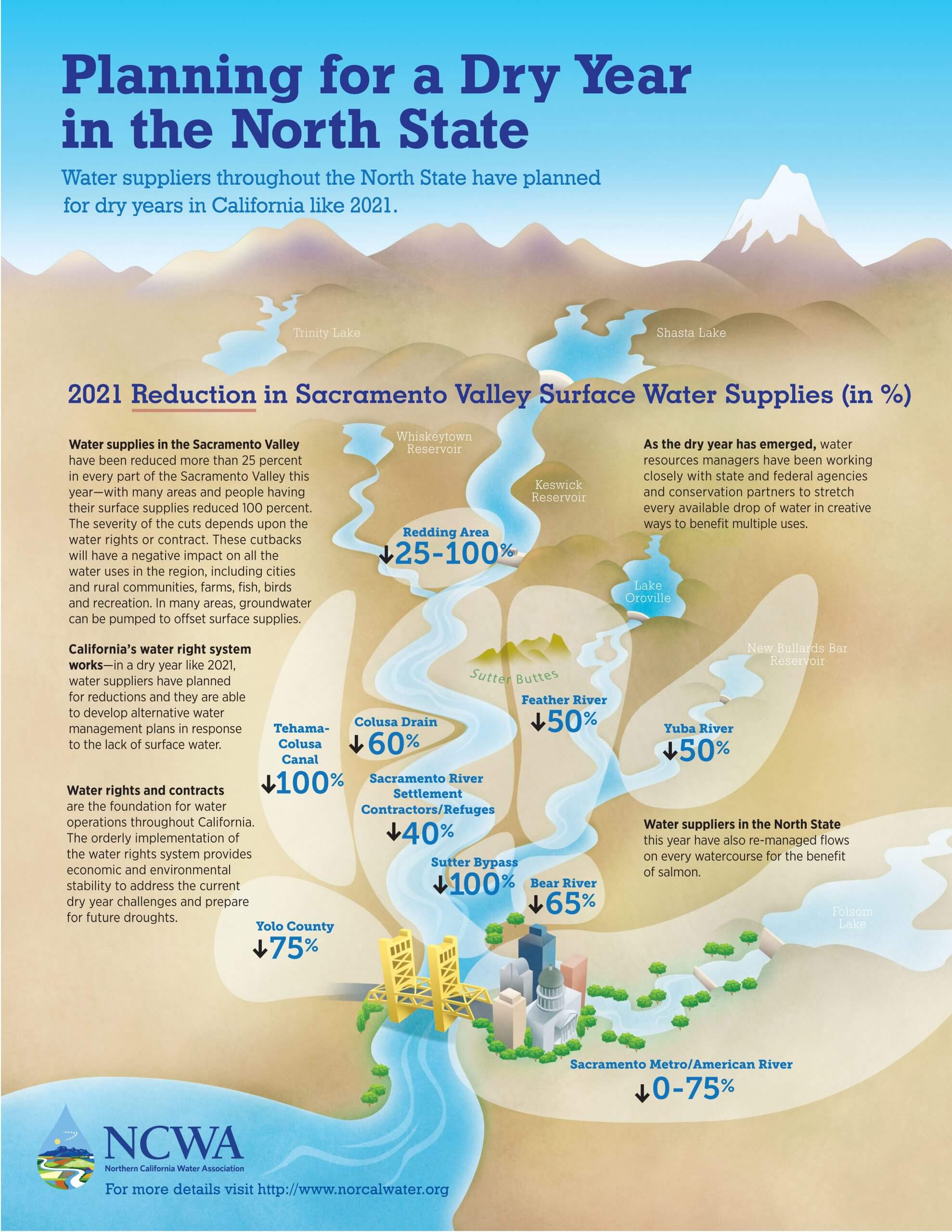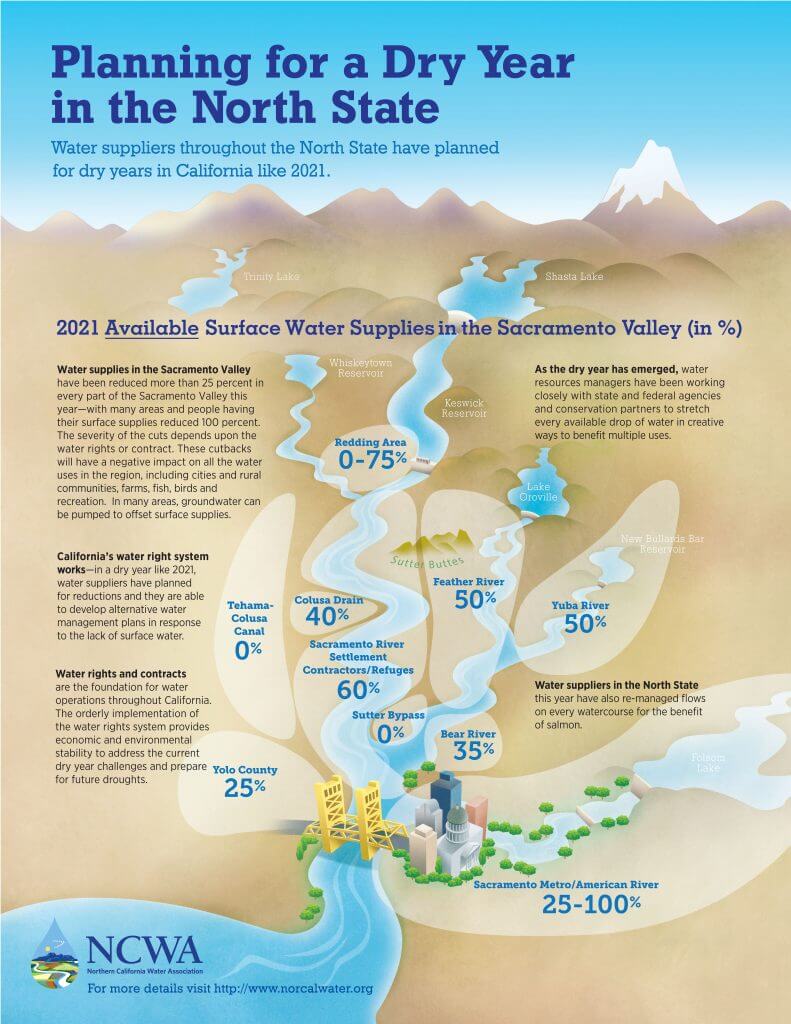By David Guy
We support an orderly water rights priority system in California and appreciate the State Water Board’s recent efforts to implement this system through emergency regulations adopted yesterday. These regulations are based on the unavailability of natural flows throughout the Bay-Delta watershed, including the Sacramento Valley. The emergency order for the Sacramento Valley appears to curtail all State Water Board permits and licenses (post-1914 water rights); pre-1914 water rights with a priority date of 1883 or later; and some riparian rights on a correlative basis on the Bear River, the Upper American River, and Putah Creek. Importantly, the curtailments do not apply to water rights or contracts to water that is already in storage. Groundwater can also be pumped as an alternative supply.

To be sure, there is plenty of pain and hardship this year as a result of the dry year and lack of available surface supplies as cities and rural communities, farms, refuges and managed wetlands, fisheries, hydropower and recreation have all suffered without water. To help minimize this pain and provide for an orderly system that preserves the sanctity of the water rights system, we will continue to help organize and work with various water suppliers with all types of water rights and contracts in the Sacramento River Basin as part of our effort to coordinate with state and federal agencies to help facilitate an orderly process to serve multiple benefits during dry years in the region.
Water right holders in Northern California and throughout California invest in the State Water Board’s Water Rights Fund to ensure the State Water Board has capacity and prioritizes the effective administration of the water rights priority system, particularly in dry years when surface supplies are limited. The state budget has also augmented this funding to help with the dry year. With the adoption of these regulations late in the water year, we are focusing on future years and how the State Water Board can improve its process to implement an orderly water rights priority system. We know that curtailment decisions have significant consequences for people, the economy and the ecosystem. In this spirit we offer the following eight (8) themes–similar to comments we provided to the State Water Board–to help move this important process forward in a positive manner.
Follow the Priority System. We appreciate the State Water Board’s commitment to the water right priority system and making decisions based on water (un)availability. From our perspective, this approach is orderly, will avoid chaos associated with other approaches (i.e., waste and unreasonable use), and works well for the Sacramento Valley, particularly if the State Water Board is able to develop a sound water availability analysis (see below) that truly reflects the Sacramento Valley.
Refine the Water Unavailability Methodology and Analysis. We appreciate the forward progress by State Water Board staff and we are encouraged by the direction the State Water Board staff is going and the significant work that has been done since 2014-15 to improve this tool. Marc Van Camp (with others at MBK Engineers) and Steve Grinnell continue to work with State Water Board staff to align the water availability curves with actual and projected water supplies and demands in the Sacramento Valley. This alignment is central to an effective curtailment process and is necessary to improve the State Water Board’s and the water users’ confidence in the technical tools and analysis that will be used for making determinations on water availability relative to water rights priority. As the State Water Board pursues the potential curtailment of pre-1914 water rights it is of great importance to an individual pre-1914 claimant that the priory dates, associated demand, and purpose of use be as accurate as possible. We look forward to further discussions to improve the accuracy of the State Water Board’s methodology and analysis, particularly improvements in the estimates of the demands in the system so that the State Water Board’s demand estimates recognize monthly variations in demands, avoid double counting the same demands, and do not include demands for non-consumptive uses. With these improvements, the State Water Board’s demand estimates will hopefully have enough precision so the State Water Board can chronologically curtail specific tranches of water rights (i.e., 1976 to 2014) in future years without blanket curtailment notices.
Appropriate Timing. The State Water Board sent an early warning notice to water right holders on March 22, 2021 that curtailments could be expected if dry conditions continue. These notices are critical to provide advance warning to help people plan for the year. As the year developed, however, the State Water Board was slow in sending the actual notices for curtailment by waiting until June 15. For context, in 2015 the notices were sent to post-1914 water right holders by May 1, 2015. Appropriate timing of curtailments is essential for planning in the Sacramento Valley and we encourage the State Water Board to be poised to issue curtailments when appropriate based on a sound water unavailability methodology and analysis discussed above.
Flexible Process to Suspend Curtailments. As we look to the fall and winter, we encourage the State Water Board’s flexibility to establish a process to promptly suspend curtailments starting in October based on precipitation and storm events, including a real time on-line system. Suspending curtailments is important for:
-
-
- Storage. We encourage the State Water Board to facilitate a process to allow any available water to be put into storage to prepare for next year. The fact that water right holders of storage projects, including the Central Valley Project and State Water Project, must comply with all terms and conditions of their water rights, including minimum instream flow, together with the rapid change in water availability and the complaint process, should help the suspension of curtailments during this time period.
- Recharge. We also encourage the State Water Board to encourage suspending curtailments to facilitate groundwater recharge and to help expedite groundwater recharge projects in any way feasible.
- Birds and Fish. We have appreciated past efforts by the State Water Board to lift Term 91 and other curtailments to allow water to be spread out in the Sacramento Valley for birds along the Pacific Flyway and fish food programs. We continue to encourage the State Water Board to provide flexibility to serve water for the Pacific Flyway and fish food programs.
- Energy. Grid stability for hydropower is essential as part of the public health provisions.
-
Additionally, the proposed emergency regulations are authorized in the specific and narrow circumstances prescribed by Water Code §1058.5 and the term should be limited to the current drought conditions.
Protection of Water Releases from Storage. Term 91 was imposed on April 29, 2021 this year and appears to work well in the Sacramento Valley. We encourage the State Water Board to continue to use a real time system with respect to Term 91. This flexibility in operating Term 91 in real time is increasingly important to serving water in the fall and winter for both birds and fish food programs. We support the protection of storage releases, such as Term 91, and we will continue to work with State Water Board staff to identify additional feasible approaches to protect storage releases.
Fully Utilize Complaint Process. We appreciate the State Water Board developing its complaint process that is available on the website. This process is very important for several reasons. First, it provides a public process to raise legitimate complaints for actions that affect higher priority water rights. Second, it allows the State Water Board more flexibility in administering the curtailment process, by relying on more senior water right holders to raise issues rather than anticipating every water right that could possibly be affected by water use in the system. We encourage the State Water Board to rely upon this program and more visibly communicate the tools and the opportunities for filing a complaint so more people are aware of the program.
Modernize the Water Rights Information System. The recent report from UC Berkeley School of Law, Piloting a Water Rights Information System for California, shows that the water rights system is resilient and can work, and that there are opportunities looking forward to update and modernize the information system to help the State Water Board administer the water rights priority system.
Voluntary Measures. The Governor’s earlier Proclamation encouraged water users and other parties to advance voluntary measures to ensure appropriate flows for salmon and other species rather than heavy-handed regulatory approaches that create mistrust and acrimony. There are flow arrangements on nearly every watercourse in the Sacramento River Basin, which are all focused upon instream flows while maintaining other uses of water. We encourage the State Water Board, in cases where it believes there are specific needs, to engage the leaders in the watershed to develop solutions to meet those needs. When necessary, the State Water Board could pursue targeted enforcement proceedings against water users who have allegedly violated these legal requirements. The State Water Board should also encourage parties to work with the fishery agencies to develop physical improvements, such as deepened channels, as a first option before reallocating water. We believe this is a thoughtful approach to serving beneficial purposes and will be effective in the long-term to meet beneficial purposes in the region.
If you have other thoughts or ideas we should consider, please send them to info@norcalwater.org.
Please click on the documents below for more details.






